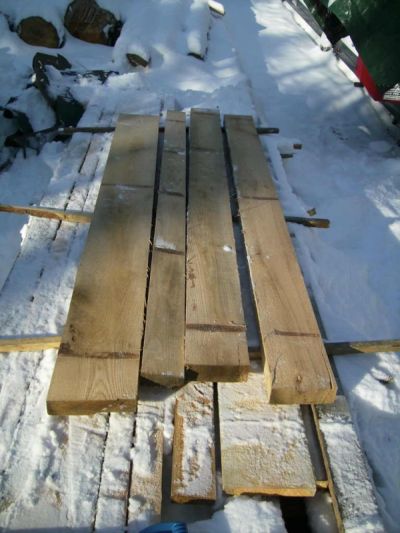Stiffening a Large-Diameter Circular Sawmill Blade
Advice on tuning or adjusting a 60-inch sawmill blade. January 27, 2007
Question
I have an older sawmill (Gieser). It has a 4" collar. Is there a way to stiffen the blade? Give the blade more support without changing the mandrel? I have used dampeners on my larger table saw. Will something like that work?
Forum Responses
(Sawing and Drying Forum)
From Professor Gene Wengert, forum technical advisor:
A stiffer blade can be had by increasing collar size. Of course, hammering also produces the same effect and running the rim a little cooler (water injection).
From contributor J:
If you think you have a problem with the blade not standing up, you should really have a look at what you are doing, rather than looking for oversize saw collars... especially since circle mills are set to height with a specific collar, and clearance problems will not allow changes unless you drop the mandrel and decrease the actual cut height of the blade.
Without you actually describing the problem, you may need to have the blade hammered… and then make sure you run the saw at the rpm the blade is hammered for. Blades that have been hung, or been really hot, will not "stand up" correctly, and will wobble, and this can get to be dangerous. If the rpm is correct and you have the horsepower to run the blade, it should run true after it is at saw rpm.
From Professor Gene Wengert, forum technical advisor:
If indeed the problem is with a blade on a circular mill that is not standing up true and straight, hammering is best. Remember to replace the bits one at a time so that the shanks are always in the same place. Also, consider having the blade cut down several inches in diameter, as you may not need the large diameter. As mentioned, rpm is also critical for good performance.
From the original questioner:
Thanks! I should elaborate a little. The biggest blade the mill will swing is a 60" blade. That's what I have. I called a saw shop to have this blade checked out and the first question he asked was "how big is the collar?" He also mentioned that a 6" collar would work better for such a large blade. From what I can see, the only way to change the collar is to change the mandrel. I am just starting out - haven't even cut my fist log yet. But I do want to do it safely.
From contributor J:
If you have never used a circle mill, and are unfamiliar with it, I would strongly advise having an experienced sawyer with you the first time you really saw, or going to a mill and watching the operation, at a minimum. Circle milling isn't like anything else since things are happening very quickly, and a mistake can have drastic consequences.
From Professor Gene Wengert, forum technical advisor:
The first question with a 60" blade, which is what we used to have on the mill I managed for years, is what is the rpm. Next question should be whether you need such a large diameter... I suggest having it cut down to 52" and then using "F" or "2-1/2" style teeth (Standall bits are often the preferred ones, which refers to a special ledge in the gullet).
In any case, get a copy of Lunstrum's book on circular sawmill maintenance. It is online, but a hard copy would be better for you, I would guess.
Circular Sawmills and Their Efficient Operation
